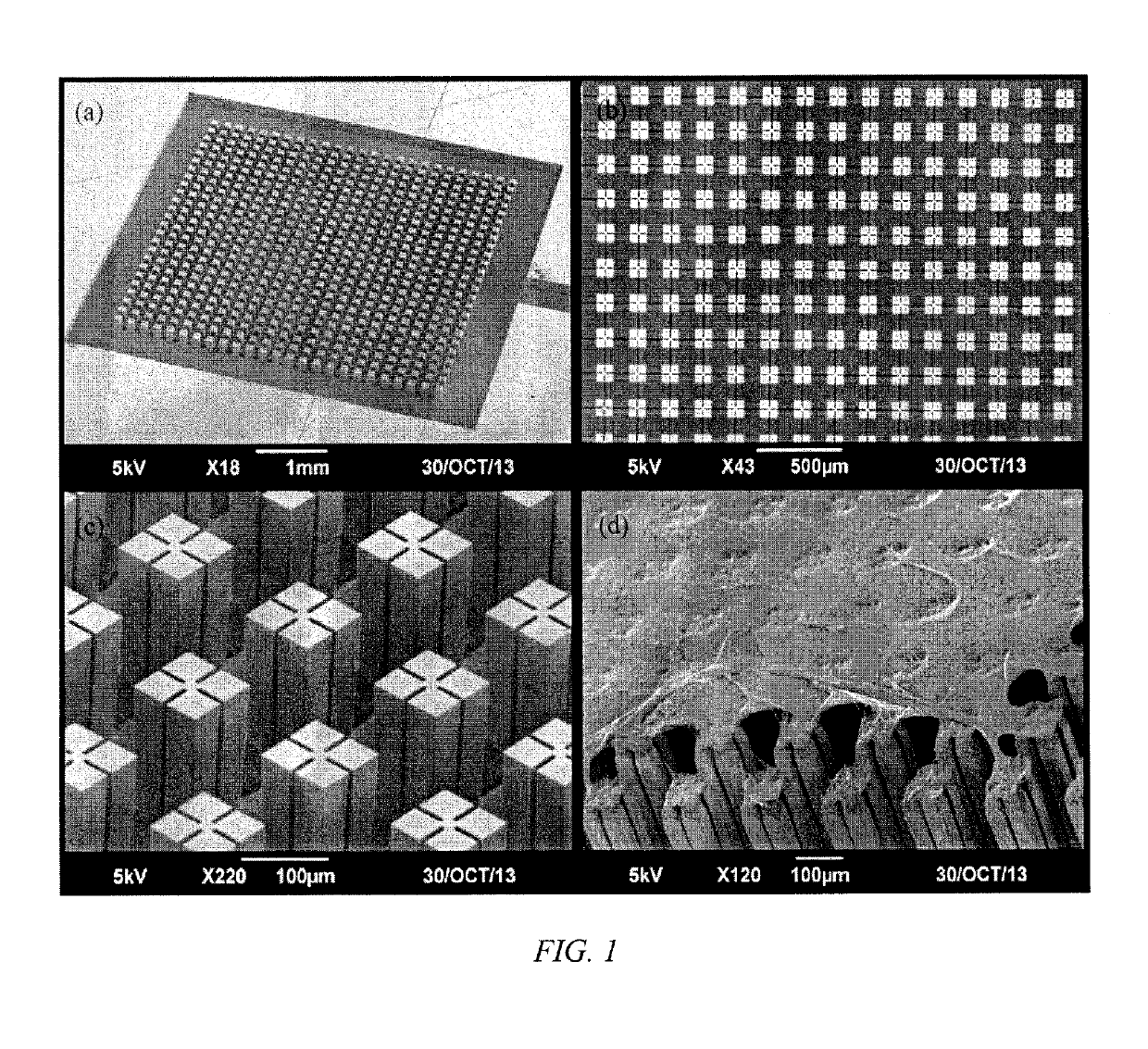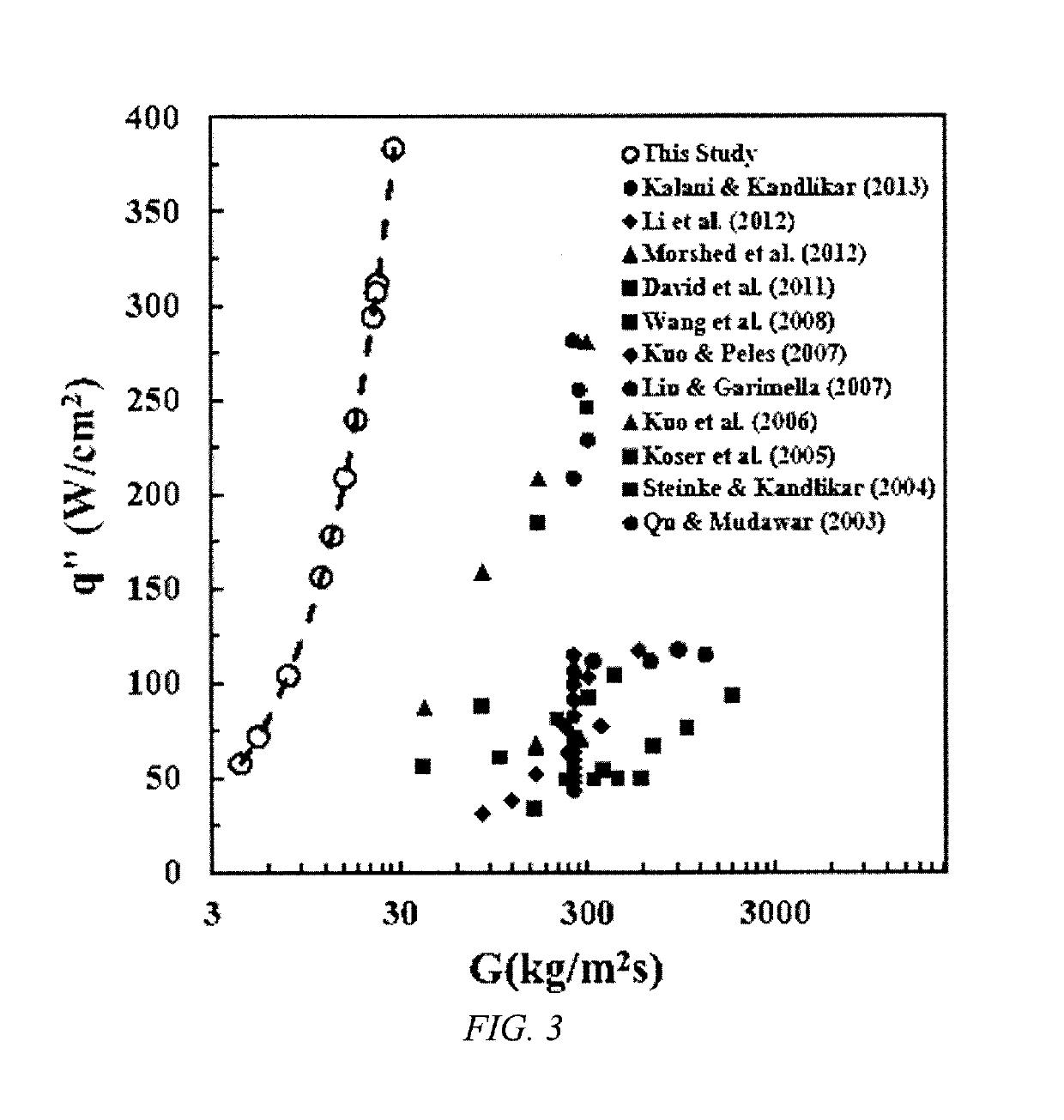Hierarchical hydrophilic/hydrophobic micro/nanostructures for pushing the limits of critical heat flux
a hydrophilic/hydrophobic micro/nanostructure technology, applied in the direction of laminated elements, lighting and heating apparatus, semiconductor/solid-state device details, etc., can solve the problems of high heat flux dissipation, low cost and reliability, and limited use of microchannels for single-phase cooling, etc., to achieve easy balance of liquid introduction rate, alleviate flow instabilities, and alter the location and shape of the meniscus
- Summary
- Abstract
- Description
- Claims
- Application Information
AI Technical Summary
Benefits of technology
Problems solved by technology
Method used
Image
Examples
Embodiment Construction
[0053]Embodiments of the invention are directed to heat sinks that require, but are not limited to, a single liquid fluid inlet and have exclusively a vapor fluid outlet through a membrane. The liquid fluid portion of a heat sink, according to an embodiment of the invention, is illustrated in FIG. 1. The fluid can be any fluid, ranging from water through hydrofluorocarbon refrigerants, for example: trifluoromethane, difluoromethane, fluoromethane, pentafluoroethane, pentafluorodimethyl ether, 1,1,2,2-tetrafluoroethane, 1,1,1,2-tetrafluoroethane, bis(difluoromethyl)ether, 1,1,2-trifluoroethane, 1,1,1-trifluoroethane, methyl trifluoromethyl ether, 2,2,2-trifluoroethyl methyl ether, 1,2-difluoroethane, 1,1-difluoroethane, fluoroethane, 1,1,2,2,3,3,3-heptafluoropropane, trifluoromethyl 1,1,2,2-tetrafluoroethyl ether, 1,1,1,2,3,3,3-heptafluoropropane, trifluoromethyl 1,2,2,2-tetrafluoroethyl ether, 1,1,1,2,2,3-hexafluoropropane, 1,1,1,2,3,3-hexafluoropropane, 1,1,1,3,3,3-hexafluoropropan...
PUM
| Property | Measurement | Unit |
|---|---|---|
| period of time | aaaaa | aaaaa |
| boiling point | aaaaa | aaaaa |
| contact angle | aaaaa | aaaaa |
Abstract
Description
Claims
Application Information
 Login to View More
Login to View More - R&D
- Intellectual Property
- Life Sciences
- Materials
- Tech Scout
- Unparalleled Data Quality
- Higher Quality Content
- 60% Fewer Hallucinations
Browse by: Latest US Patents, China's latest patents, Technical Efficacy Thesaurus, Application Domain, Technology Topic, Popular Technical Reports.
© 2025 PatSnap. All rights reserved.Legal|Privacy policy|Modern Slavery Act Transparency Statement|Sitemap|About US| Contact US: help@patsnap.com



